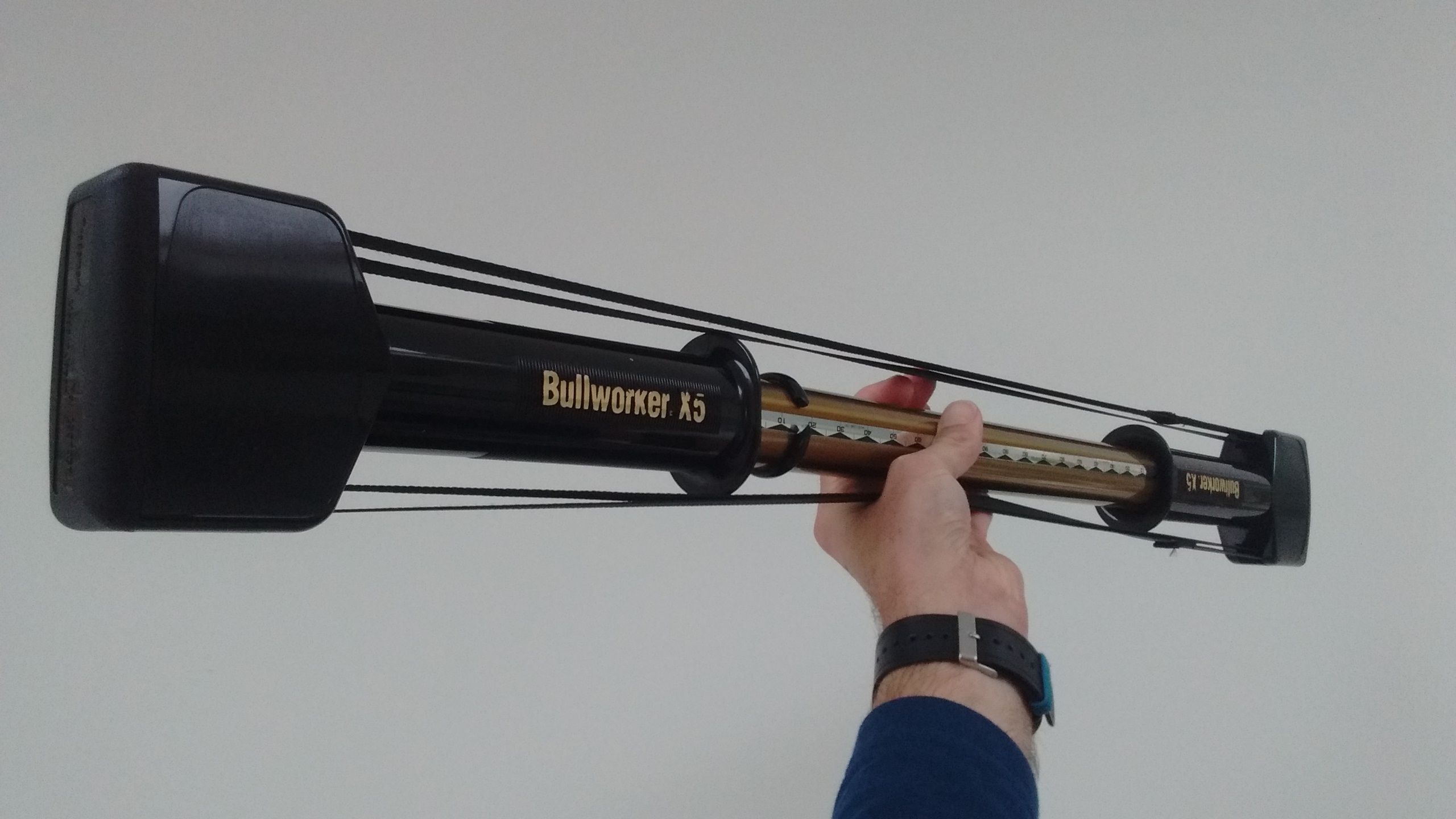Yes, the Bullworker will build muscle. It incorporates the principles of isometric training – a highly effective and efficient system of building both strength and muscle mass.

The Bullworker (link to Amazon) was developed in the 1960s by a Gert F. Kölbel. It consists of two tubes of metal that slide one inside the other. Inside the cylinder is a strong spring that rests against the two handles at each end of the device. As the handles are squeezed together, the spring compresses.
In addition, two straps link the two handles so that when they are pulled apart cause the handles to move together against the resistance of the spring.
The Bullworker can therefore be used in one of two ways: either the handles can be squeezed together directly or the straps can be pulled apart, which squeezes the handles indirectly. The strong spring in the device provides the resistance.
It can be held and positioned in different ways so that all the muscles of the body – chest, back, abs, arms, shoulders and legs – can be exercised. Some of the exercises that can be performed can be seen here.
You can either squeeze the Bullworker handles or pull apart the straps in short, pulse like reps or alternatively you can use the device in an isometric fashion.
In a conventional exercise with weights, the muscle contracts and relaxes as the weight moves up and down. In an isometric contraction, the muscle doesn’t move but it still strains at the effort to try and contract. Imagine trying to move an immovable object such as a massive boulder. Every muscle and sinew would exert itself in an attempt to move it. This is called an overcoming isometric.
A similar type of exercise is a yielding isometric where you might try to hold a weight in position for as long as possible, say a weighted barbell at a held in a bicep curl at 90 degrees. As the muscles tire the weight will slowly be lowered but the idea is to resist this as long as possible.
Working out with a Bullworker involves using yielding isometrics: you contract against the spring for a specific period of time.

Whenever, I read about isometrics, they are usually mentioned as a rehabilitation aid as a way to exercise muscles recovering from injury. However, this wasn’t always the case.
Bob Hoffman, the founder of the York Barbell Company, went to great lengths to popularise the use of isometrics during the 1960s and he even wrote a book – Functional Isometric Contraction.
In the book, Hoffman describes how he trained American Olympic weightlifters by incorporating isometrics into their training and the tremendous success he had in doing so. The weightlifters also competed in a number of bodybuilding competitions and ranked highly whenever they did so.
As with so much in strength training and bodybuilding, new fads and ideas came into fashion and the tremendous results that came with isometrics was largely forgotten.
The Bullworker allows you to train using the same isometric training principles that Bob Hoffman had success with.
